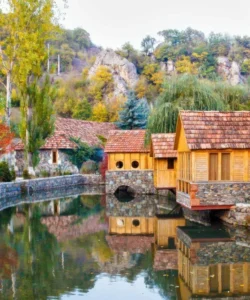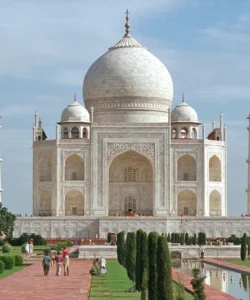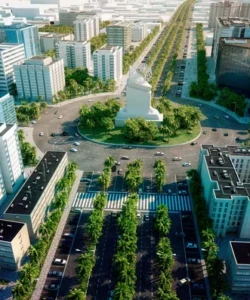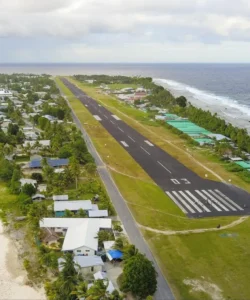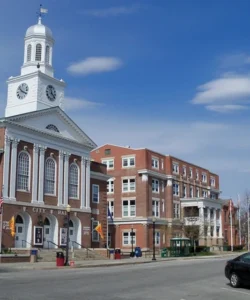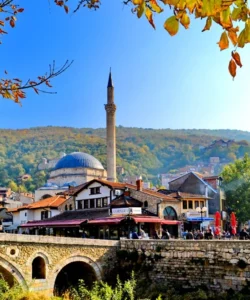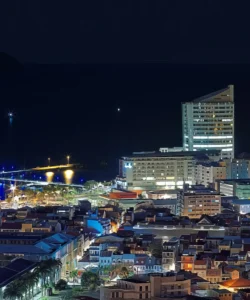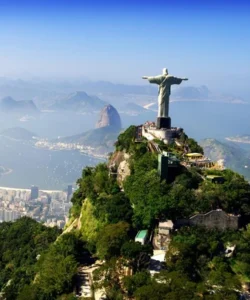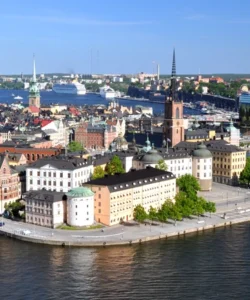Guinea is a West African nation with a diverse geography, rich cultural heritage, and a history shaped by both ancient empires and colonial rule.
![]()
Area & Population:
Guinea’s area is approximately 245,857 square kilometers. The country has a population of around 14.36 million people.
Language:
The official language of Guinea is French. However, there are numerous indigenous languages spoken, with the most prominent being Fula (or Pular), Malinke, and Susu.
Currency:
The currency of Guinea is the Guinean Franc (GNF).
Religion:
Islam is the dominant religion in Guinea, practiced by approximately 89% of the population. Christianity is followed by about 7%, and about 2% adhere to indigenous religious beliefs. A number of Muslims and Christians also incorporate traditional African religious practices into their beliefs.
Capital & Major Cities:
- Capital: Conakry is the capital and largest city of Guinea. It is a major port city situated on the Atlantic coast and serves as the country’s economic and cultural hub.
- Major Cities: Other important cities include:
- Nzérékoré: Located in the southeastern forested region, it is a major commercial center.
- Kankan: A large city in Upper Guinea and a center for Islamic learning.
- Kindia: A scenic city in western Guinea known for its lush landscapes.
Attractions & Wonders:
Guinea is a land of great natural beauty, with diverse landscapes ranging from the coastal plains to the mountainous highlands.
- Natural Attractions:
- Fouta Djallon: A highland region known for its dramatic landscapes, including waterfalls (such as the Kambadaga Falls) and traditional villages. It’s often called the “water tower” of West Africa as it’s the source of several major rivers, including the Niger, Senegal, and Gambia.
- Mount Nimba Strict Nature Reserve: A UNESCO World Heritage site that straddles the borders of Guinea, Côte d’Ivoire, and Liberia. It is a biodiversity hotspot with a unique array of flora and fauna.
- The Guinean coastline: Features scenic beaches, particularly around Conakry and Boké.
- Cultural & Urban Attractions:
- Conakry Grand Mosque: A magnificent mosque in the capital, one of the largest in West Africa, known for its beautiful architectural design.
- National Museum of Guinea (Conakry): Showcases traditional objects and artifacts from the country’s pre-colonial and colonial eras.
- Camayenne Botanical Garden (Conakry): A serene park offering a contrast to the bustling city.
- Traditional markets: Lively markets like the Madina market in Conakry are great places to experience local culture and purchase traditional crafts.
Architecture:
Guinean architecture is a blend of traditional African styles, Islamic influences, and colonial-era French designs.
- Traditional: Often features the use of local materials like earth, wood, and straw. Rural dwellings may be decorated with geometric patterns and traditional motifs.
- Islamic: Mosques and other religious buildings often incorporate elements of Islamic architecture, such as domes and minarets.
- Colonial: In cities like Conakry, you can find a mix of modern and colonial-era French buildings, characterized by the use of brick and masonry.
Roads:
Guinea’s road infrastructure is a significant challenge. While there are some paved roads connecting major cities, much of the network is unpaved and in poor condition, making travel difficult, especially during the rainy season.
Hotels:
Hotel options in Guinea are primarily concentrated in the capital, Conakry. You can find a range of accommodations, from international chains like the Radisson Blu and Noom Hotel to local hotels and guesthouses.
Restaurants & Cuisine:
Guinean cuisine is an integral part of West African cuisine, with staple ingredients including rice, seafood, and a variety of vegetables and spices.
- Staple Dishes:
- Fufu: A starchy side dish made from boiled and pounded cassava, plantains, or yams, often served with a stew or sauce.
- Maafe (or Mafe): A rich and savory peanut stew made with meat and vegetables.
- Riz Gras: A flavorful rice dish cooked in a sauce with meat and vegetables.
- Yassa: A dish of meat (often chicken or fish) marinated with lemon juice, onions, and spices, then grilled or fried.
- Popular Beverages:
- Jus de Bissap: A popular drink made from hibiscus flowers.
- Ginger drink: A refreshing and spicy drink made from ginger root.
- Dining Scene: Restaurants in Conakry cater to both locals and a growing number of international visitors, offering traditional Guinean dishes as well as some international cuisine.


